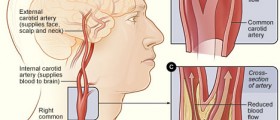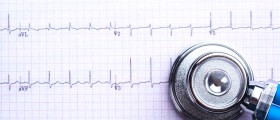 Blocked or Clogged Arteries
Blocked or Clogged Arteries

Blocked or clogged arteries occur when the arteries, the main vessels that transport blood rich in oxygen to the body from the heart, are lined with a buildup of plaque that results from calcium and cholesterol, among other things. This problem requires attention because it can lead to serious negative health outcomes as the arteries narrow.
We will talk about test that can determine if your arteries are working properly or not. The arteries carry blood throughout the human body and transport nutrients. They take the blood filled with oxygen from the lungs to the rest of the body. They can become narrowed if fat and minerals gather inside them, which will lead to the reduced flow of blood and further problems, notably an increased risk of heart attack and stroke.
Clogged arteries or atherosclerosis are other names for this problem. The symptoms are usually hard to detect in the early stage, but they are evident when the arteries have narrowed enough to cause more serious damage. The symptoms show when heart, brain or any vital organ is not getting enough blood. We will now focus on the test that can determine, if the blocked arteries are problem you have.
Carotid Artery Blockage Test
The carotid artery goes through the neck and supplies the brain with blood. Stroke can result from a blocked carotid artery. The examination at the doctor’s office includes a stethoscope, which doctor will use to find a certain sound. If this test is not conclusive, an ultrasound test will be performed. If a blockage is found, medications will be given. Other tests done in order to find the blockage of this artery include MRI scans, magnetic resonance angiography, contract angiography and magnetic resonance angiography.
Blocked Arteries: Tests
The first thing the doctor will examine, if a blockage of the arteries or atherosclerosis is suspected, is the blood pressure. Hypertension and atherosclerosis are two problems that are created because of the excess fat gathered in the inner layers of arteries. There are several tests further done if the doctor suspects on one of these problems and they include cardiac stress test, angiogram, electrocardiogram, blood tests and vascular lab studies.
The vascular lab test will measure the blood pressure in arms and ankles and on several other locations. The access to the vertebral, cervical and carotid arteries is gained by the use of duplex ultrasound method. With this method, doctors are able to detect the exact location of the blockage.
Checking of the person's blood glucose levels (to look for diabetes) diabetes and cholesterol level is done with blood tests, including a lipid panel. ECG or electrocardiogram may be needed as well. During this test, a machine will record the impulses coming out from the brain. It measures the heart rate also and it can see if the heart problems or attacks have been sustained in the past, along with the detection of the blockages. When the test is performed for finding the blockage, dye will be inserted with an injection into the arteries. Because of the dye, the blockages will be visible on the monitor. Tests that are also used are position emission tomography, coronary angiography, computed tomography and a cardiac stress test.
People can reduce their risk of atherosclerosis by eating a healthy and balanced diet, avoiding trans fats, and exercising regularly. Stop smoking if you still do. Try to maintain a healthy weight. If you have high cholesterol, take any medications your doctor prescribes exactly as instructed. Over time, clogged arteries can get worse, putting them at risk of heart disease. Atherosclerosis can also be managed with lifestyle changes and medications, so the sooner you find out about it, the better.
- medlineplus.gov/magazine/issues/fall10/articles/fall10pg26-27.html
- medlineplus.gov/ency/article/003876.htm
- Photo courtesy of BruceBlaus by Wikimedia Commons: en.wikipedia.org/wiki/Coronary_artery_disease#/media/File:Blausen_0259_CoronaryArteryDisease_02.png

















Your thoughts on this
Loading...